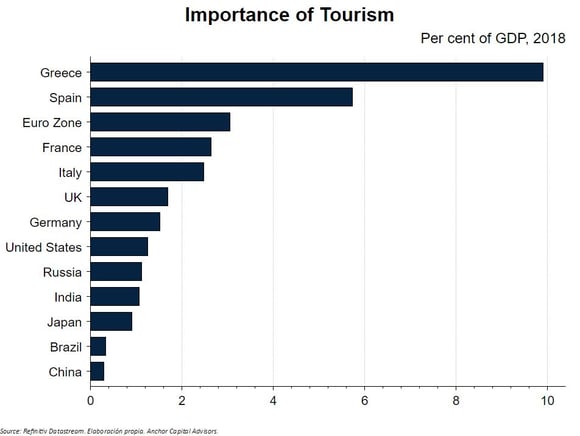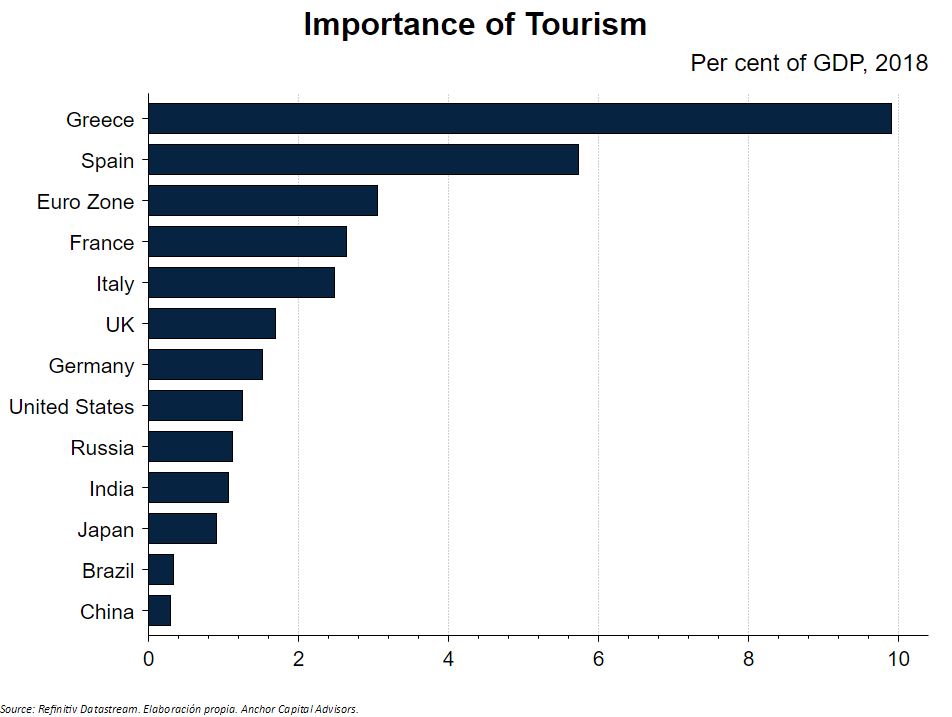COVID-19: Tourism Shock
Probably, the most affected countries by the COVID-19 crisis will be those that have the greatest weight in their GDP from non-essential economic sectors, such as tourism and leisure.
How are these sectors distributed in the main economies worldwide? In the following graph we have the answer.

One of the facts that helped Spain during the recovery from the 2008 crisis was tourism. Despite the lower initial demand caused by the same crisis, the competitiveness and attraction of the sector made Spain a good destination to spend the holidays. Since then, it has become an essential sector for the Spanish economy, accounting for the 6% of GDP in 2018 on a direct basis.
Combined with Greece, they are two of the world's economies that will be most affected by a significant contraction in this sector. At the microeconomic level, vacations are the first thing a family cuts off in times of crisis.
Other economies, such as Germany or the United States, are more dependent on other sectors that add more value to the economy, such as manufacturing and technology.
Despite the fact that no sector is immune to shocks, we have to consider that many international flights will be canceled during this 2020, while production lines will resume their activity throughout the second and third quarters, most likely.
In any case, that does not mean that the tourism sector is dead for life: in the short term it will suffer a sharp contraction, but in the medium and long term, people will continue to travel. Maybe not the same way, but it will continue to do so.
The opportunity cost of a country whose economy depends on tourism is to leave out other more disruptive as well as productive sectors.
If we try to find the positive side of it, it can be an opportunity for these more dependent countries to change their production model towards sectors with a higher margin and added value. Every problem brings an opportunity to do it well and solve it.

